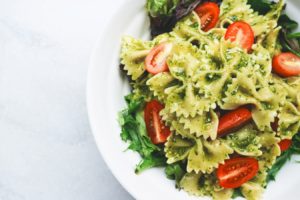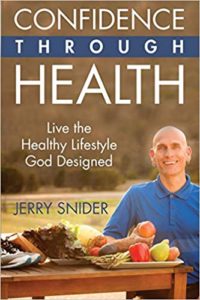“If you want to be a runner… run.” It’s sage if common advice from coaches, race directors and trainers. But what if a series of severe injuries get in the way?
Be a runner.

That’s what self-described “Transformation Specialist” Jerry Snider did after the former collegiate athlete suffered PCL and MCL injuries three years ago in a water skiing fall, which followed a spontaneous collapsed lung (and another while in the hospital for the first). Instead of finding a more sedentary way of life, the 1996 Texas A&M graduate now runs 40-50 miles per week and has written Confidence Through Health: Live the Healthy Lifestyle God Designed, detailing his methods in maintaining health and achieving goals.
Snider took time recently to speak with SportsMD.com about some of his thoughts on a range of topics from dietary needs for athletes to hydration and his recovery from those injuries.
SportsMD.com: What special dietary needs do distance runners have that might vary from those of other athletes?
Jerry Snider: When a distance runner is looking at what foods to eat, the focus needs to be put on not just high performance but also injury prevention. Whether it’s a simple muscle cramp, a stress fracture, or anemia, injuries can both be caused and avoided by what a distance runner eats. Proper amounts of calcium help prevent muscle cramps and bone issues. Both plant-based and meat-based sources of iron are necessary to prevent anemia but also promote proper muscle recovery.

SMD: Marathons and other distance events would often hold “carbo-loading” nights before events. Is pasta a good meal during that time frame?
JS: Carbo-loading is a real thing and can be beneficial before a race. Carbohydrates are a fuel source that typically take longer to burn up which is why they are a great source of energy for distance runners. While you do want to have good fats, proteins, and carbs in your pre-race meal, having a heavy carbohydrate meal will benefit your during the race. Pasta is a good source of carbohydrates but there is no proof that it is a superior source of carbohydrates than other food sources such as rice, chickpeas, or pizza.
SMD: Do you recommend gels and other on-the-go foods during long runs?
JS: For me, the use of gels and other run snacks fall under the category of preparation. I firmly believe that you can properly prepare your body for up to three hours (depending on pace) of running without needing to replace nutrition during that run. But if you don’t properly prepare, meaning your nutrition is not on point, then you need to use snacks while on your run. It’s all in how you train your body to react. If you train while using gels and such, then you’ll need them when you race a long race such as a marathon. If you don’t train with them then you likely won’t need them. As you approach the three hour mark you’ll need to plan on some type of nutrition because there is only so much your body can store to be used during a long run. Personally, I do not eat anything during my long runs or races. I focus heavily on what I eat each day so that my body is properly fueled to run a one mile time trial or a 20 mile training run without an issue.

SMD: What are some guidelines for hydrating before, during and post-race.
JS: While nutrition is important nothing is more important to a distance runner than hydration. Even the slightest tilt towards dehydration can bring a massive decrease in performance, especially if nutrition is poor. Proper hydration starts long before race day, even before race month. The first key piece to remember is that you cannot hydrate instantly. It takes time. Even when you use an IV bag to replenish your fluids, it takes time. Live by a three hour rule with pre-race hydration. If you aren’t hydrated properly three hours before the race you won’t be during the race. Anyone that has run a race knows your body begins to operate differently as you near the excitement of the start of the race. Because of the changes in body functions, you won’t be absorbing water as readily at the cellular level and therefore you won’t be truly hydrating your cells but rather causing a need to visit the port-o-potty for the third or fourth time. Hydrate early.
During a race there are many factors that come into play in determining whether you take advantage of the water stations. How long you are running (time not distance), weather conditions (heat and humidity), and did you start the race hydrated are all factors in whether you drink while running. The less hydrated you are at the beginning, the more frequently you’ll need to drink. Unlike the pre-race jitters not allowing you to utilize the fluid properly, once you are running the nerves are settled and your body functions more normally. Help yourself out by sipping, not gulping, when you feel yourself tiring. The hotter or more humid it is definitely increases the frequency with which you should drink. Likewise, the longer the time you are running the more you’ll need to be drinking. With all that said, I typically do not drink during races until I get over the 10k distance or 45+ minute races. I drink over 4 liters of water daily to make sure I’m hydrated properly.
Post-race hydration is easy, keep drinking until you urinate. Once you urinate, check the color and if it’s lightly tinted to no tint then you are hydrated again and can resume your normal practice. If it’s a dark tint you need to keep pounding the liquid until you urinate again and can reevaluate.
SMD: Plain water or sports drinks?

JS: The sports drink industry is a massive business. Growing up I was a firm believer in using sports drinks to help with my sports performance. Over the years of learning more about nutrition and running, I’ve determined that a proper meal plan does away with the need for sports drinks. All you need is water. When you look at what the sports drink claims to do it is supposed to replenish your fluids and electrolytes. You can get the fluid piece from water. What about the electrolytes? Electrolytes are vitamins and minerals that your body needs to function at the cellular level. Most of the electrolytes you need come from food sources. If you eat from a healthy, well balanced meal plan you will have a surplus of electrolytes in your body at any given moment and will not find yourself in a severe deficiency even after a long run. To expand on this in regards to the most common electrolyte that people feel they must replenish after exercise, let’s look at sodium or salt.
Did you know that sodium is the only item to show up on the standard food nutrition label that it is NOT recommended you reach 100% of the daily value? That value displayed for sodium is actually a maximum, not to be exceeded amount. With that in mind, your body’s lymphatic system serves the function of removing toxins from your body. One place those toxins leave is through your skin when you sweat. Your sweat serves to cool your body but also to help remove toxins and excess minerals (just like you urinate out excess minerals). As a country, we have been prompted to replenish sodium in our bodies when our sweat is salty. I’ve found the opposite is true – when you cut back on your salt intake your sweat is no longer salty. I’ve been running for years on a no-salt meal plan without any issues (in fact recent blood tests showed my sodium levels to be smack dab in the middle of normal). If your sweat is salty it’s not because you need to replenish the lost salt but because it was already excessive inside your body. Bonus – unsalty sweat doesn’t smell nearly as much. Eat the nutrients you need and drink water.
SMD: How do dietary needs change as runners age?
 JS: As distance runners age, the main concern you have to look for is how your hormones are changing. For both runners and non-runners, what you eat has a definite affect on the hormone levels produced in your body. Proper hormone levels aide not just in performance but in recovery from exercise. Vitamins become an essential nutrient for the aging runner, especially the B vitamins and calcium. As a young athlete you can get away with treating your body badly but as you age you need to take special care of your hormone producing glands such as your thyroid. You do that through vitamins and minerals.
JS: As distance runners age, the main concern you have to look for is how your hormones are changing. For both runners and non-runners, what you eat has a definite affect on the hormone levels produced in your body. Proper hormone levels aide not just in performance but in recovery from exercise. Vitamins become an essential nutrient for the aging runner, especially the B vitamins and calcium. As a young athlete you can get away with treating your body badly but as you age you need to take special care of your hormone producing glands such as your thyroid. You do that through vitamins and minerals.
SMD: You had some serious injuries but have gone on to compete in Master’s track & field events. What made you want to get back to competing as opposed to just healing enough for light exercise?
JS: When I competed in high school and college, running was about reaching the top of the mountain. My goals were to win and I did my share of that. While I still have that desire to win, my goal is more to show people what is possible. As a coach I try to help people reach their best. Sometimes that’s winning but more often it’s running at their personal best. I could easily have taken my injuries (spontaneous pnuemothorax in 2011 & 2013, ruptured PCL & grade 3 MCL tear in 2016) and decided my time as a competitive runner was done. But there is a whole new competitive world that opens up to the over 40 runner. That world allows me to compete hard and also show others that big injuries don’t have to keep you down. My wife and I joke after each race that I don’t win that I was the fastest person out there without a PCL in his left knee. As a coach, I often ask people to do what they think is impossible. I can see that they can complete the task but to they have to get past their own limiting beliefs. Competing as a long distance athlete without a PCL and a lung that’s had a small chunk taken out my version of proof that nothing is impossible if you decide you want it.
 SMD: How was the journey of writing your book, and what is the main takeaway you want readers to gain from it?
SMD: How was the journey of writing your book, and what is the main takeaway you want readers to gain from it?
JS: Writing my book, Confidence Through Health, was a by-product of starting my business. I never intended to write a book and definitely did not have it as a life goal. As I started my business in 2016 one of the tips I kept coming across for entrepreneurs was to read books. I was not a reader and never had been. But as I set a goal to read several books a month, I started to realize that many of these books on self-development and business development were written by people just like me. A person so passionate about what they know that they want to share it with everyone. In January of 2018, I began to write with a focus on breaking down the myths around health. It turned into a book that details how to live a healthy lifestyle based on what your cells need. Once you find that healthy lifestyle, you gain a level of confidence to reach the goals you previously thought impossible. If readers get only one thing from my book, I hope that they learn that they have control over their health and through improving their health they can improve not only their lives but be able to make a positive impact in their community.

